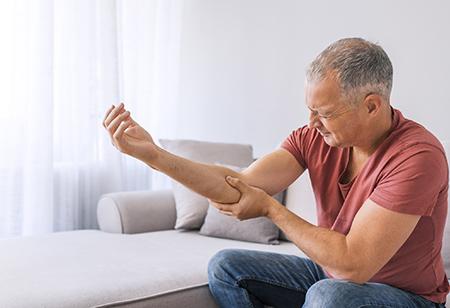Prevention and treatment options
Unfortunately, there's not a lot you can do to prevent tennis or golf elbow other than avoiding the repetitive motion. And, that's not exactly appealing if you're an avid athlete. Even if you discontinue the activity, it can take up to two years for your body to heal and your symptoms to stop, Dr. Ahmed said.
Instead, he advises his patients to modify the way they play golf and tennis. This includes:
- Controlling the movement of your wrist with a brace to give the tendons a break.
- Avoiding intense practice sessions when you hit more balls over a brief period of time.
- Taking longer breaks between tennis matches or rounds of golf.
If you suffer from acute symptoms, you can:
- Use an ice pack on the affected area.
- Use a topical anti-inflammatory cream or gel.
- Take oral anti-inflammatory medication.
- Get physical therapy to strengthen your muscles, which will help stabilize the tendons.
If these conservative measures don't provide relief, other treatment options include:
- Steroid injections.
- Platelet-rich plasma treatment, which involves drawing your blood, separating and concentrating the platelets and injecting them into the injury site.
- Surgery, including:
- Open procedures.
- Orthoscopic surgery, which is minimally invasive.
- The Tenex procedure, which uses ultrasound imaging to view and remove damaged tendon tissue.
When to see your doctor
If you've tried at-home treatments such as ice packs and anti-inflammatory medications without relief, it's time to see an orthopedic surgeon. Treatment is more likely to be effective when you get help for tennis or golf elbow early, so don't put it off for too long.
